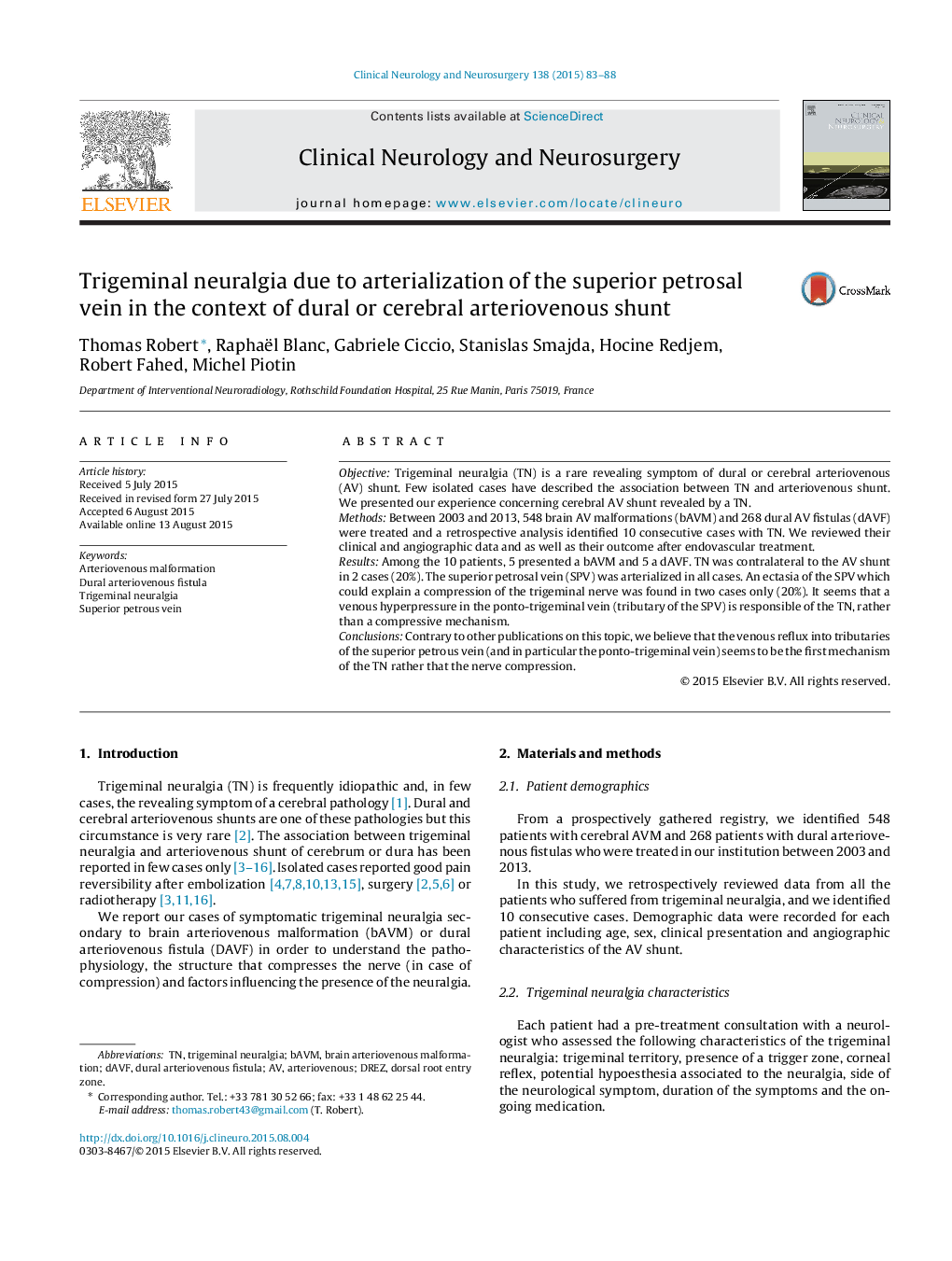| Article ID | Journal | Published Year | Pages | File Type |
|---|---|---|---|---|
| 3039727 | Clinical Neurology and Neurosurgery | 2015 | 6 Pages |
•Trigeminal neuralgia could be, in few cases, the symptom of a cerebral pathology.•We analyze cases of trigeminal neuralgia secondary to brain arteriovenous malformation or dural arteriovenous fistula.•The first etiology seems not to be the compression of the nerve but the venous reflux.
ObjectiveTrigeminal neuralgia (TN) is a rare revealing symptom of dural or cerebral arteriovenous (AV) shunt. Few isolated cases have described the association between TN and arteriovenous shunt. We presented our experience concerning cerebral AV shunt revealed by a TN.MethodsBetween 2003 and 2013, 548 brain AV malformations (bAVM) and 268 dural AV fistulas (dAVF) were treated and a retrospective analysis identified 10 consecutive cases with TN. We reviewed their clinical and angiographic data and as well as their outcome after endovascular treatment.ResultsAmong the 10 patients, 5 presented a bAVM and 5 a dAVF. TN was contralateral to the AV shunt in 2 cases (20%). The superior petrosal vein (SPV) was arterialized in all cases. An ectasia of the SPV which could explain a compression of the trigeminal nerve was found in two cases only (20%). It seems that a venous hyperpressure in the ponto-trigeminal vein (tributary of the SPV) is responsible of the TN, rather than a compressive mechanism.ConclusionsContrary to other publications on this topic, we believe that the venous reflux into tributaries of the superior petrous vein (and in particular the ponto-trigeminal vein) seems to be the first mechanism of the TN rather that the nerve compression.
